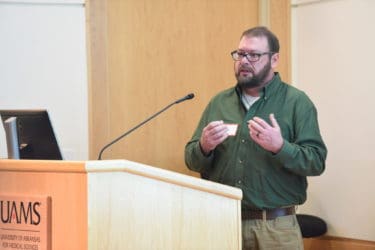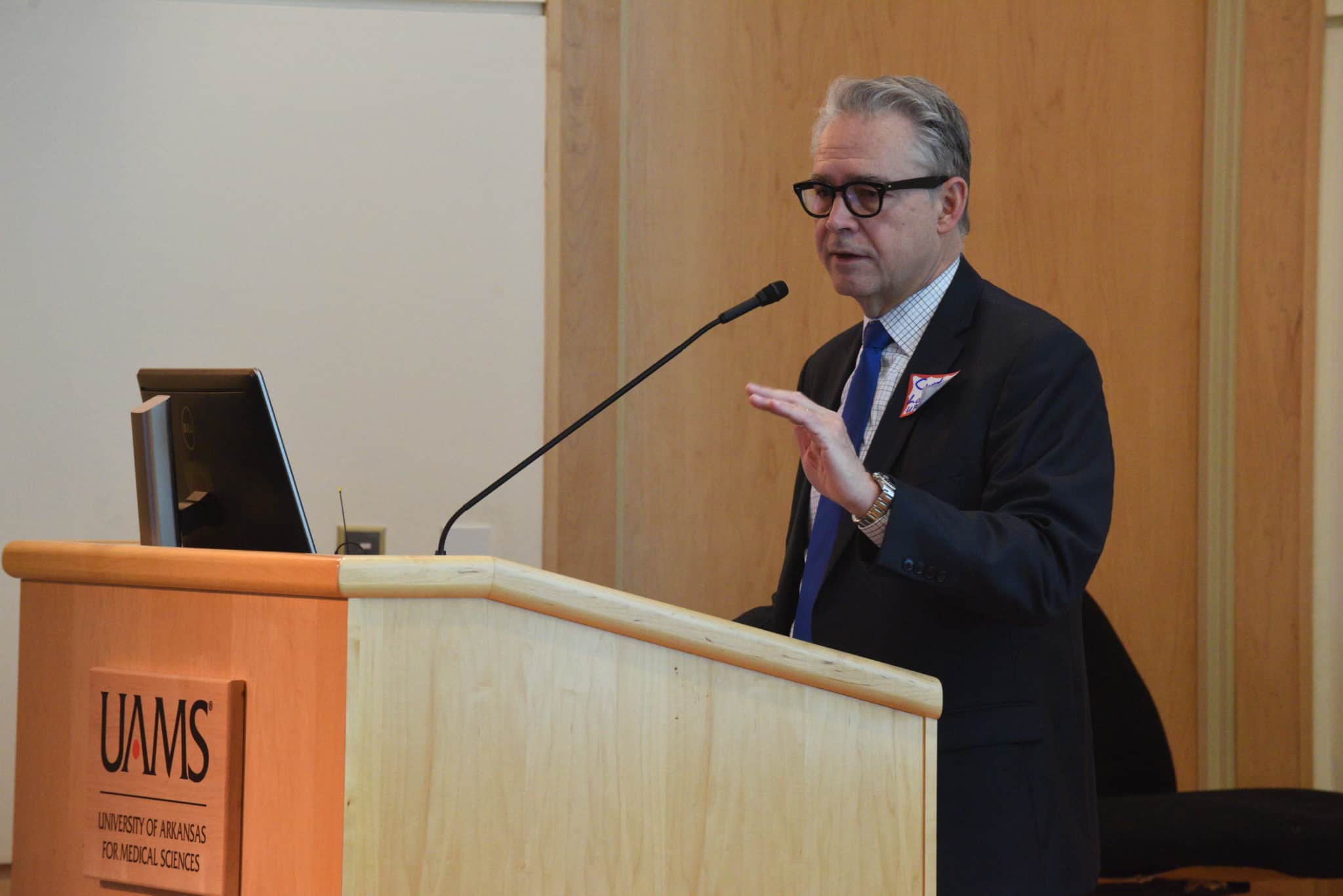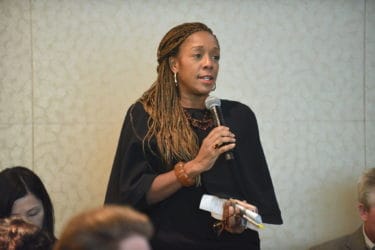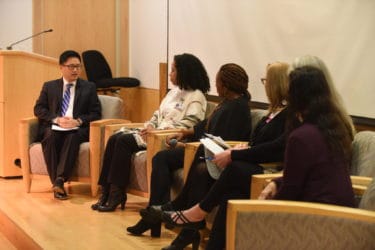First UAMS Digital Health Conference a Hit for Researchers, Providers
| Nearly everyone in the audience raised their hand when Curtis Lowery, M.D., asked if they used their smartphones for banking or making purchases. In welcoming UAMS’ first
Digital Health Conference on Nov. 30, he told the 80-plus attendees the health care industry has been frustratingly slower to follow the banking industry’s embrace of digital technology.
“It is unacceptable for me in women’s health to have maternal deaths that are preventable,” said Lowery, a nationally recognized pioneer and innovator in the use of telemedicine who chairs the Department of Obstetrics and Gynecology in the UAMS College of Medicine. “We can do something about it.”
The conference gave researchers and health care providers an overview of the fast evolving digital health technologies and a chance to learn more specifically about the current lag in policies and regulations, and the endless opportunities this technology brings to providers and patients.
Digital health includes interactive video (telemedicine, telehealth), wearable devices, implantable devices, smartphone applications, robotics, augmented intelligence and machine learning.
UAMS digital health researcher Carolyn Greene, Ph.D., associate professor in the College of Medicine Department of Psychiatry, said the
day-long conference was a valuable use of her time.
“I loved that there was an opportunity to think about research and the promise of digital health in the future, but also we got a chance to hear about all the incredible digital health work that’s happening right now across the UAMS campuses and across the state,” she said. “As a clinician, you want to know about the shiny objects – you know, the exciting stuff – but sometimes your ability to really use it depends on being able to get reimbursed for it. I thought the conference did a good job of discussing some of those practical aspects also.”
The conference’s keynote speakers were Penny Mohr from the Patient-Centered Outcomes Research Institute (PCORI), where she is senior advisor for Emerging Technology and Delivery System Innovation Research Initiatives; and Mei Wa Kwong, J.D., executive director of the Center for Connected Health Policy, the federally designated National Telehealth Policy Resource Center.
“I really enjoyed hearing Mei Wa Kwong talk,” said Sarah Rhoads, Ph.D., D.N.P., a former UAMS faculty researcher and now a professor at the University of Tennessee Health Science Center at Memphis. “She did a great job simplifying and explaining the payment for mobile health and telehealth and telemedicine and the issues surrounding remote patient monitoring. It’s very important to know what the payers are willing to pay for when it comes to implementing technology.”
Rhoads also said she enjoyed Mohr’s perspective on what PCORI can and cannot fund. “It just provided a lot of clarity for me,” she said.
Health systems are behind other industries in adopting digital technologies in part because government policies haven’t kept pace with the advances, said Anita Walden, M.S., a conference
organizer and instructor in the Department of Biomedical Informatics in the UAMS College of Medicine.
“Patients are looking forward to using digital technologies, and the industry companies and the payers are moving forward with trying to implement it,” Walden said. “They need the providers to catch up.”
Despite the challenges, Lowery said that UAMS, with the strong support of Chancellor Cam Patterson, M.D., MBA, will lead the state in adoption of digital health technologies.
“I think over the next few years we’re going to build the most modern, connected health care delivery system in the nation because we’re the only teaching hospital

John Paul Nolan, a research community advisory board member, urged UAMS to take the lead on digital health.
in the state and we have a lot of really rural and poor hospital systems everywhere,” he said. “I
think all of us are committed to changing that.”
In the next five years, he predicted, the same percentage who are banking on their phones today will be receiving
health care through their mobile devices.
John Paul Nolan, a research participant and Community Advisory Board member for a UAMS research study, urged Lowery and other UAMS leaders to take the lead in digital health care. Holmes, a veteran, said an expansion of telemedicine is desperately needed in rural communities. In small towns, residents notice whose vehicle is parked at a mental health clinic. Because of the stigma, people who need help often don’t get it. If mental health services could be provided via interactive video to a veteran with post-traumatic stress disorder, for example, that scenario could be avoided.
“UAMS is poised to provide care,” Nolan said. With smartphones and other mobile devices, “In that moment of crisis, they don’t have to get out of the house. Those are the things we need to be looking at. UAMS brings a very powerful chip to the table because of its infrastructure, its national and international partners and the way that it is set up to study and to disseminate the information to make the public more aware of what’s going on.”
The Digital Health Conference was sponsored by the UAMS Office of Interprofessional Education, with support from the UAMS Center for Distance Health, the Department of Biomedical Informatics, South Central Telehealth Resource Center, and the UAMS Translational Research Institute.




